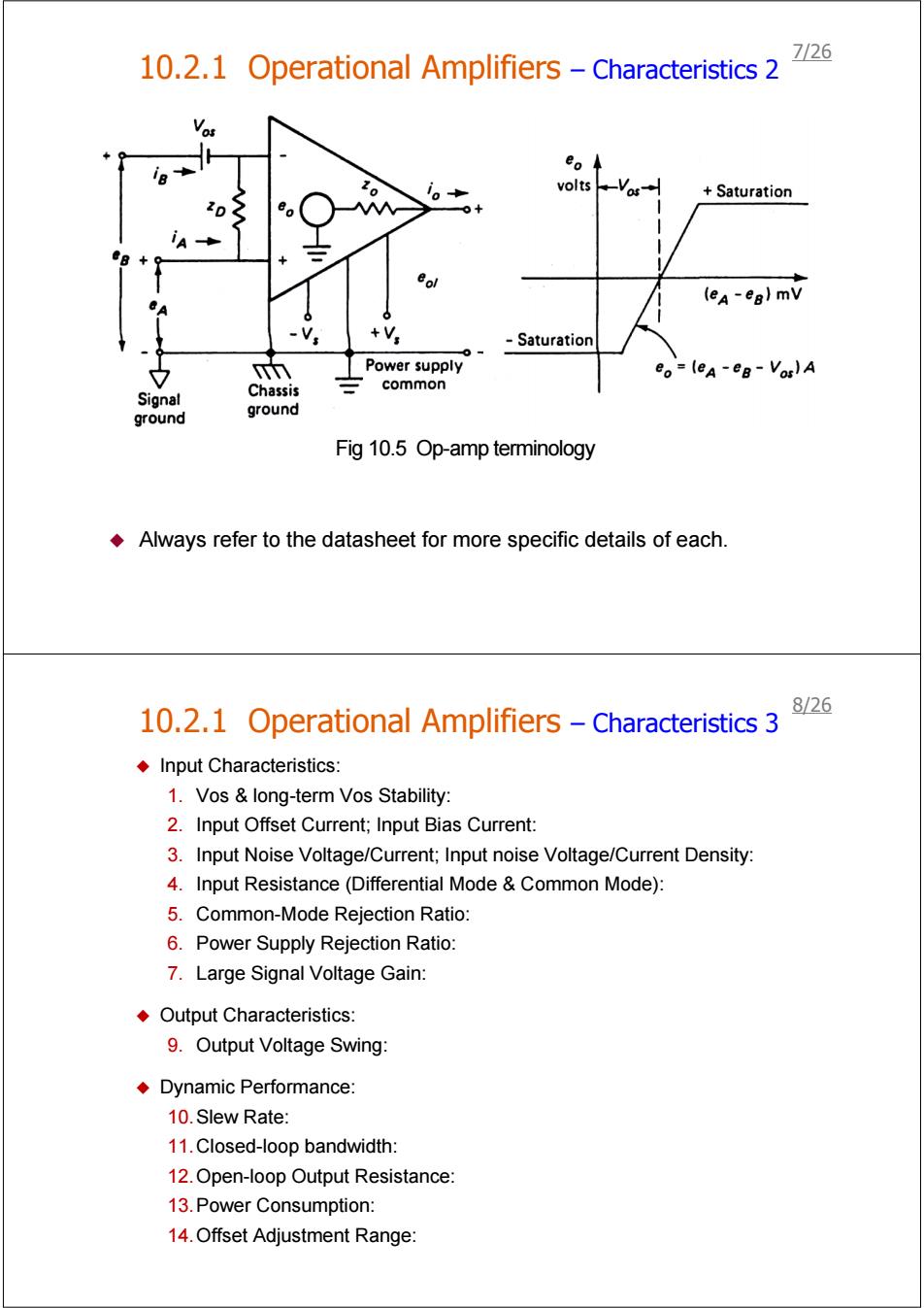正在加载图片...

10.2.1 Operational Amplifiers-Characteristics 2 7/26 e。 voltsVas Saturation eol (ea-eg)mV -Saturation 中 Power supply eo=(eA-eB-Vos)A common Signal Chassis ground ground Fig 10.5 Op-amp terminology Always refer to the datasheet for more specific details of each. 8/26 10.2.1 Operational Amplifiers-Characteristics 3 Input Characteristics: 1.Vos long-term Vos Stability: 2.Input Offset Current;Input Bias Current: 3.Input Noise Voltage/Current;Input noise Voltage/Current Density: 4.Input Resistance(Differential Mode Common Mode): 5.Common-Mode Rejection Ratio: 6.Power Supply Rejection Ratio: 7.Large Signal Voltage Gain: Output Characteristics: 9.Output Voltage Swing: Dynamic Performance: 10.Slew Rate: 11.Closed-loop bandwidth: 12.Open-loop Output Resistance: 13.Power Consumption: 14.Offset Adjustment Range: Always refer to the datasheet for more specific details of each. 10.2.1 Operational Amplifiers – Characteristics 2 Fig 10.5 Op-amp terminology 7/26 10.2.1 Operational Amplifiers – Characteristics 3 Input Characteristics: 1. Vos & long-term Vos Stability: 2. Input Offset Current; Input Bias Current: 3. Input Noise Voltage/Current; Input noise Voltage/Current Density: 4. Input Resistance (Differential Mode & Common Mode): 5. Common-Mode Rejection Ratio: 6. Power Supply Rejection Ratio: 7. Large Signal Voltage Gain: Output Characteristics: 9. Output Voltage Swing: Dynamic Performance: 10.Slew Rate: 11.Closed-loop bandwidth: 12.Open-loop Output Resistance: 13.Power Consumption: 14.Offset Adjustment Range: 8/26